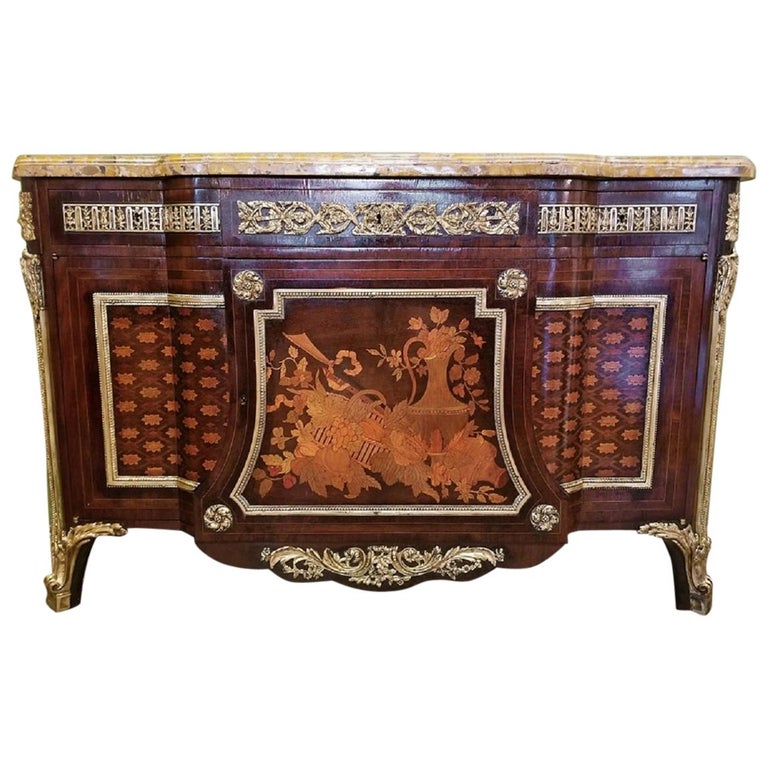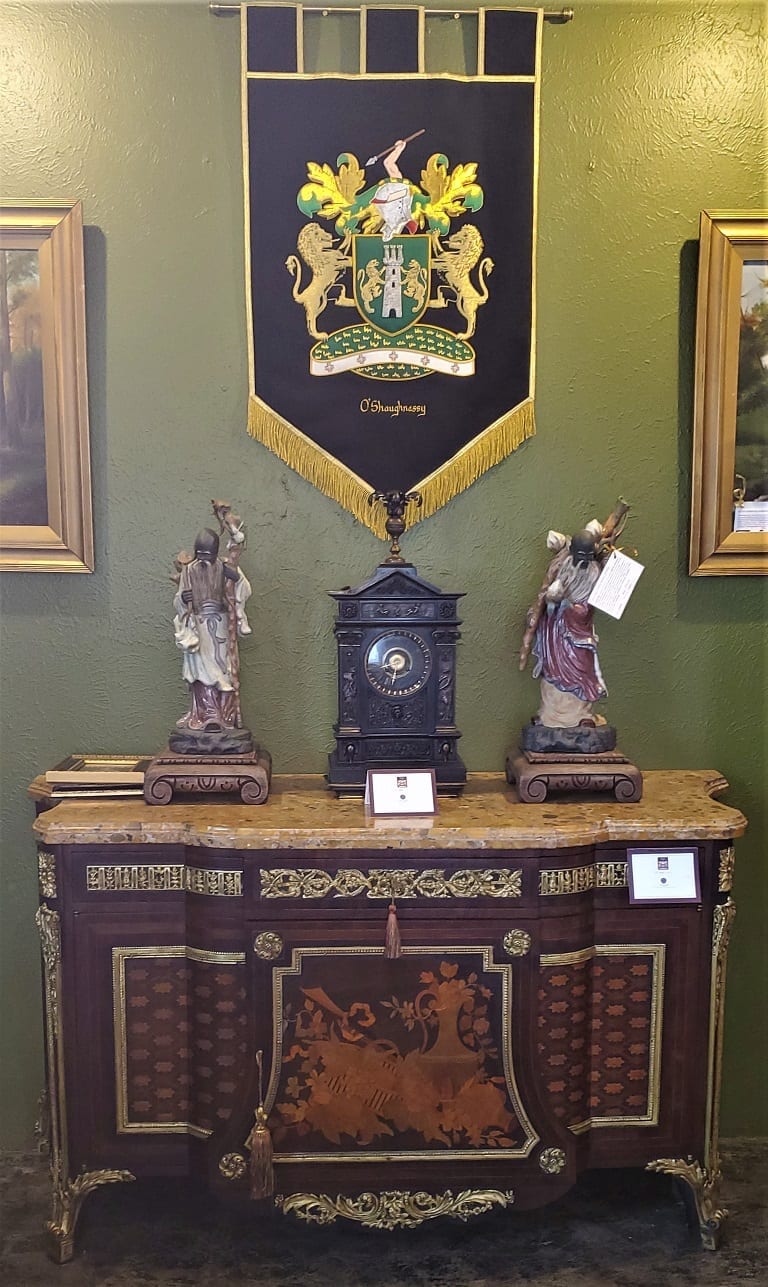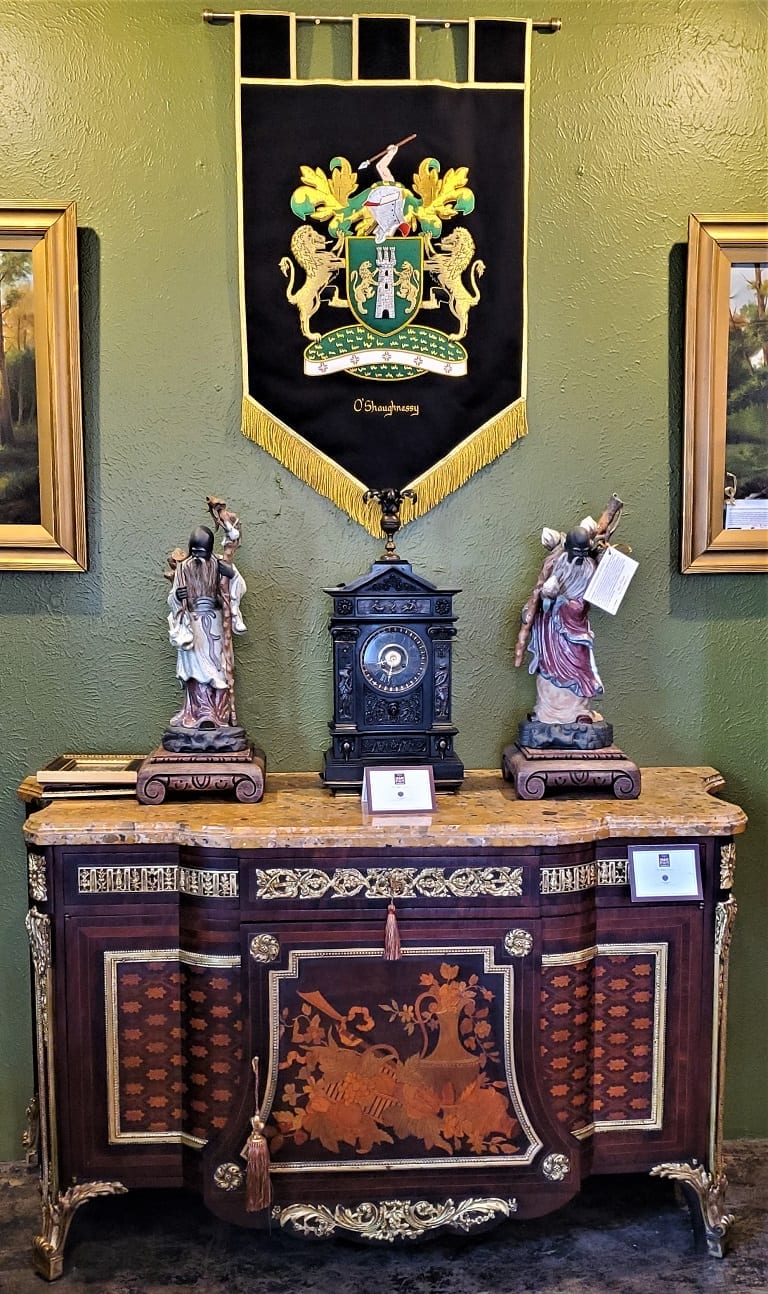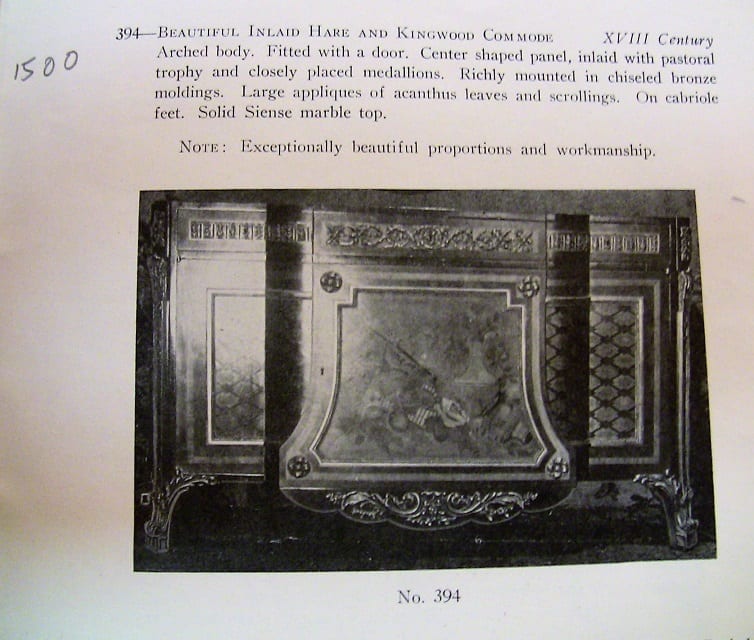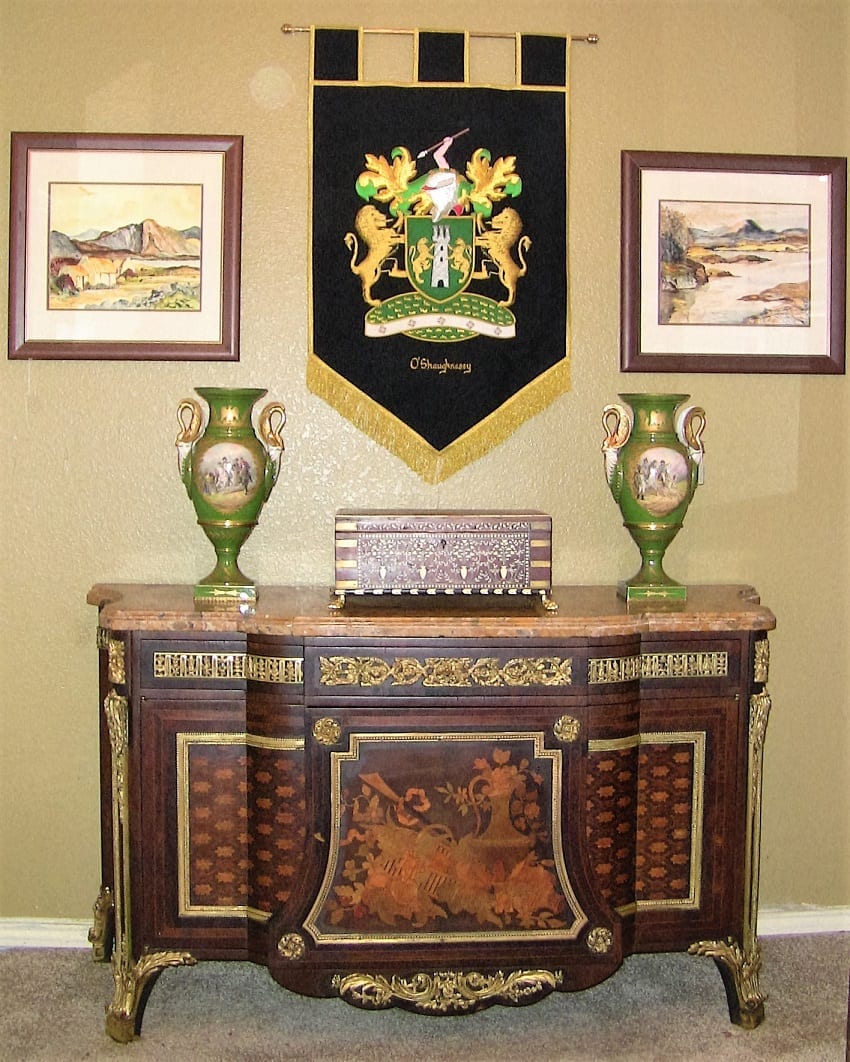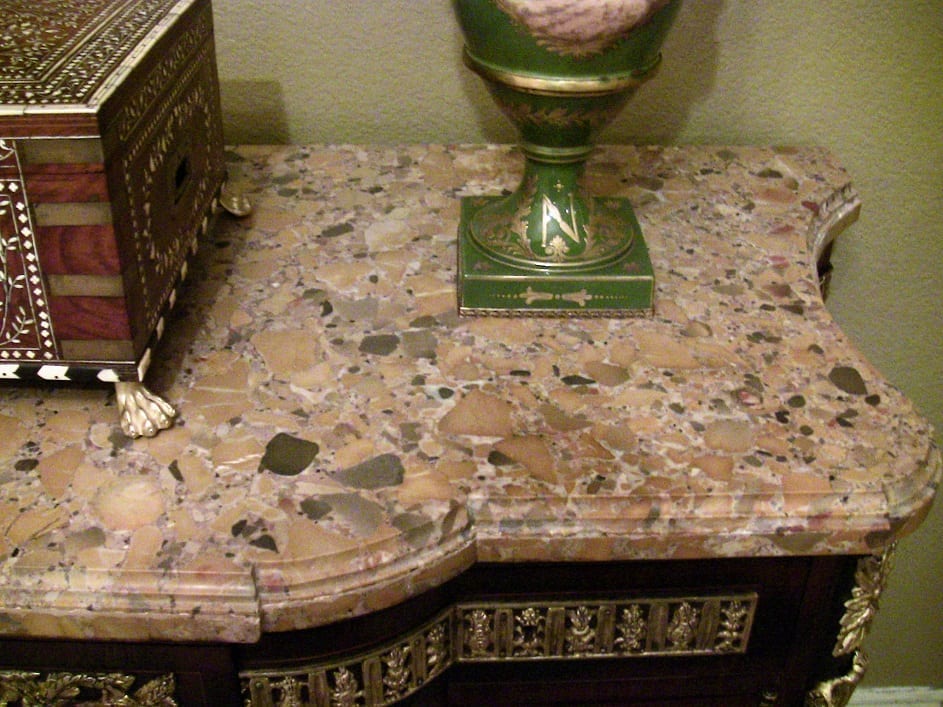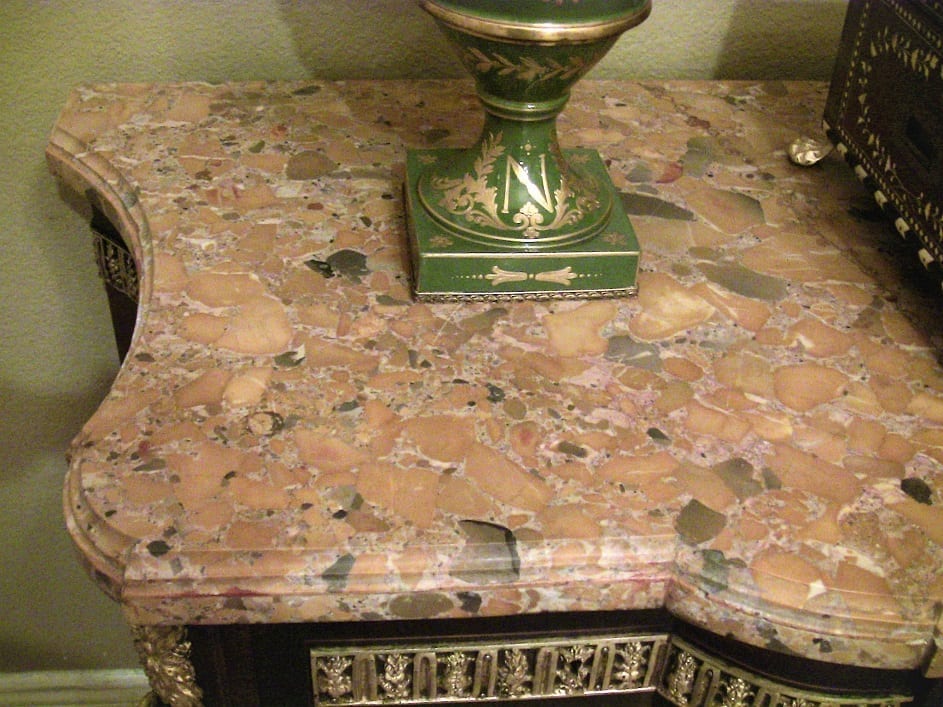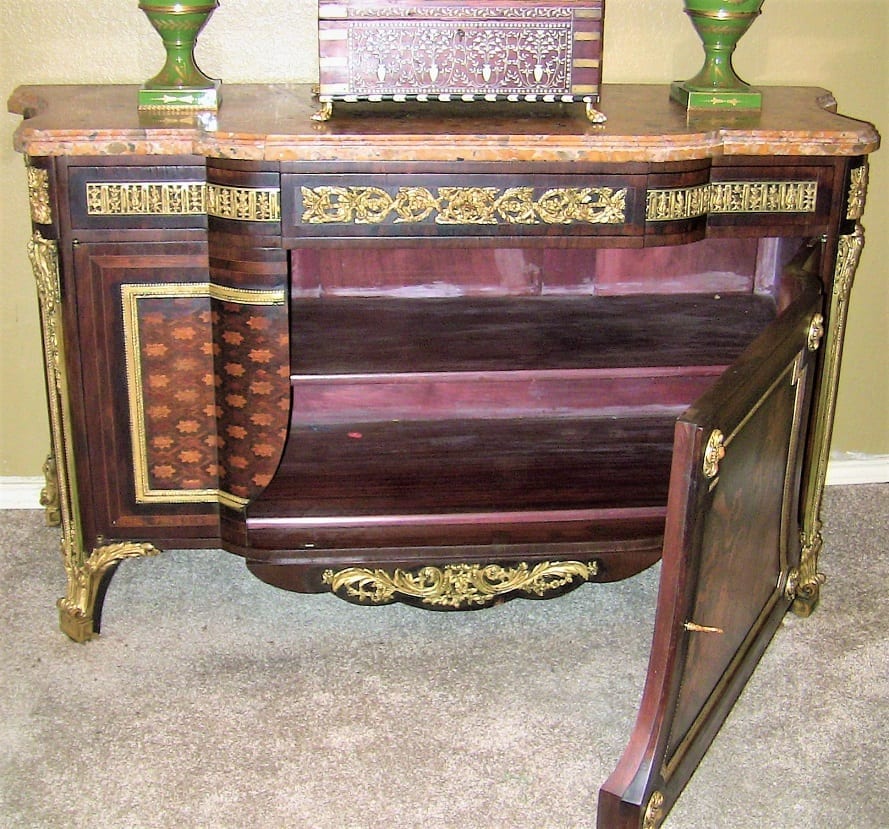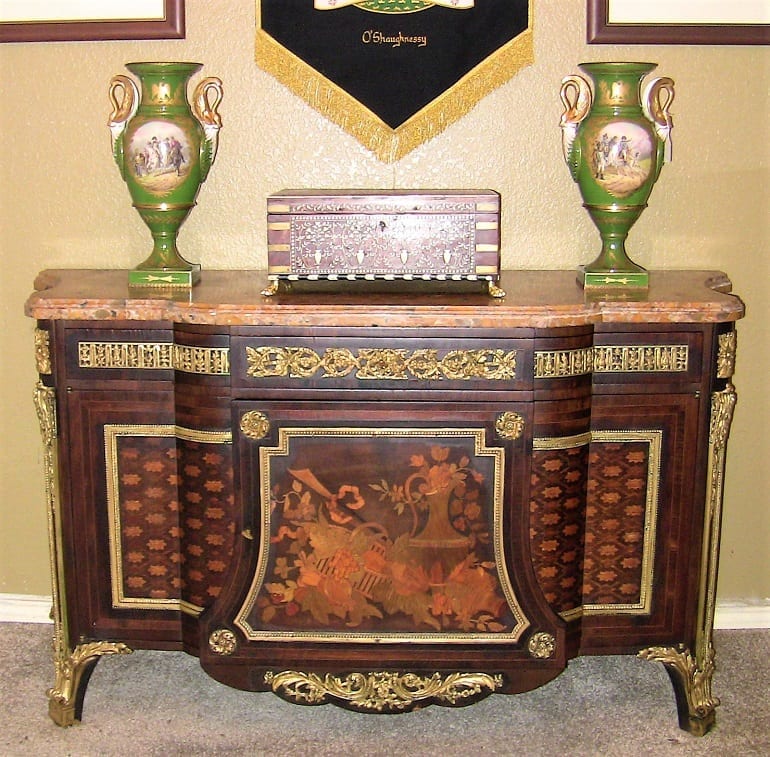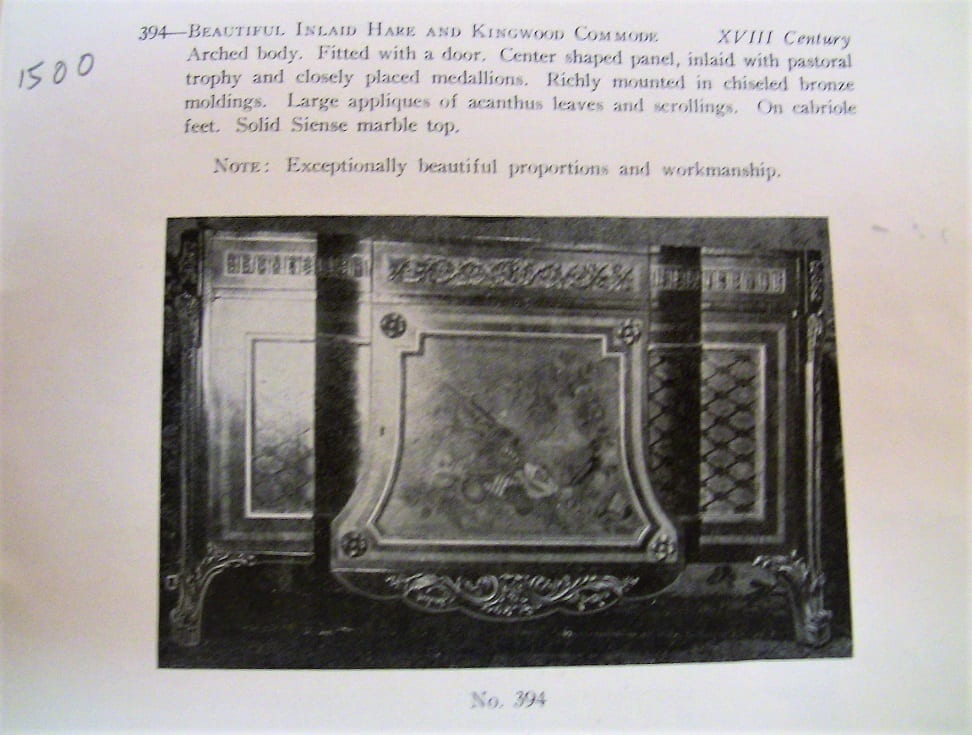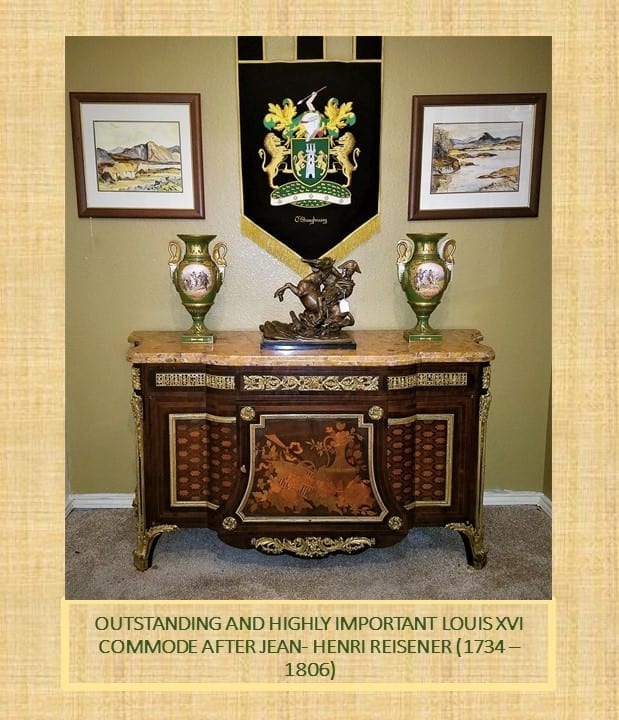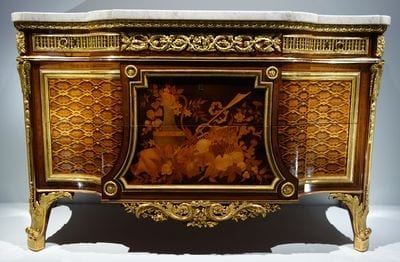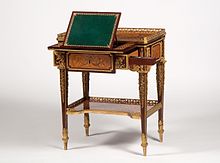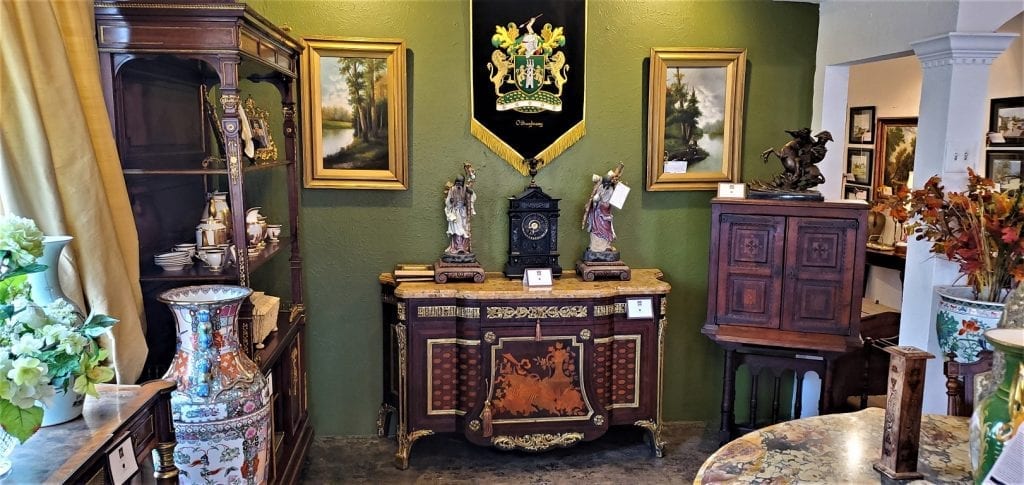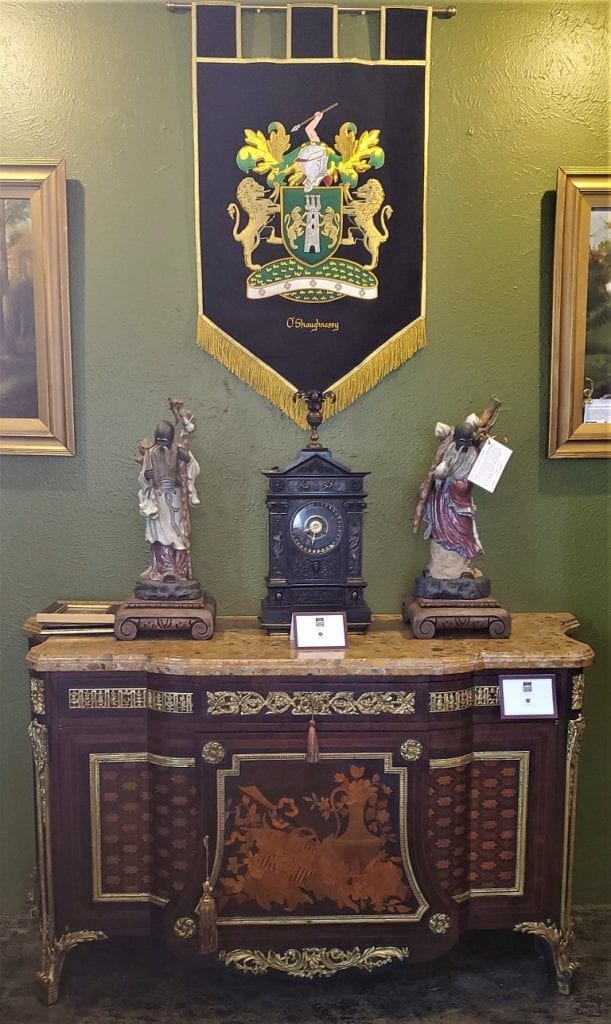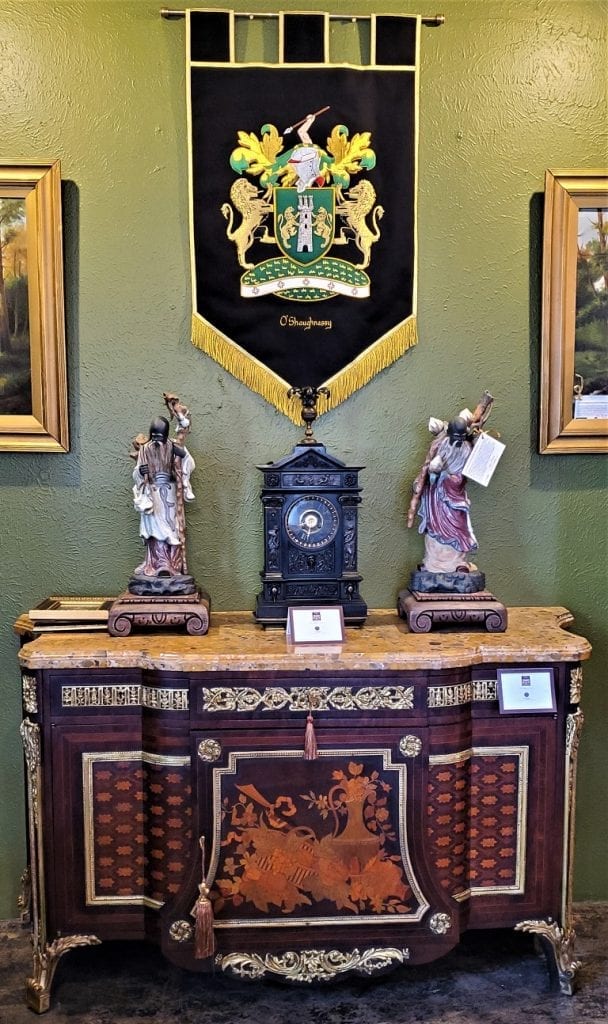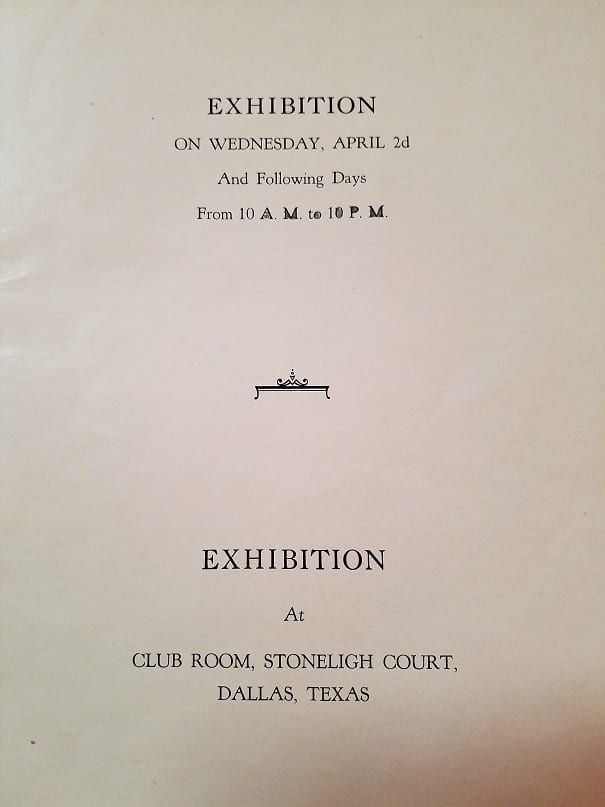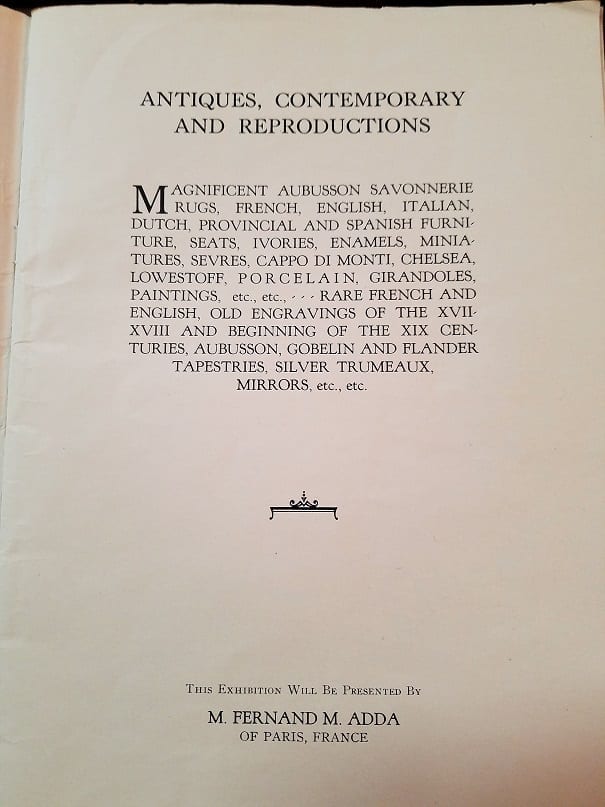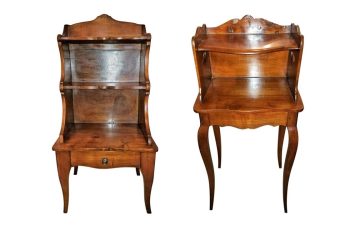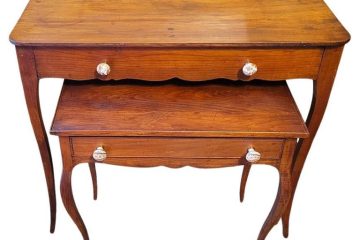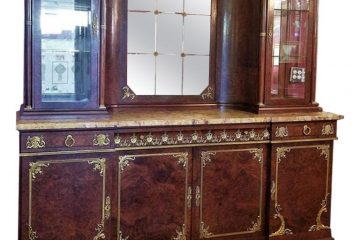PRESENTING an ABSOLUTELY STUNNING and IMPORTANT 19th Century Louis XVI Style, Harewood and Kingwood Commode after the model made by Jean Henri Reisener.
Jean-Henri Riesener (German: Johann Heinrich Riesener) (4 July 1734 – 6 January 1806[1]) was the French royal ébéniste, working in Paris, whose work exemplified the early neoclassical “Louis XVI style”.
Riesener was born in Gladbeck, Westphalia, Germany, moved to Paris where he apprenticed soon after 1754 with Jean-François Oeben, whose widow he married;[2] he was received master ébéniste in January 1768. The following year he began supplying furniture for the Crown and in July 1774 formally became ébéniste ordinaire du roi,[3] “the greatest Parisian ébéniste of the Louis XVI period.”[4] Riesener was responsible for some of the richest examples of furniture in the Louis XVI style, as the French court embarked on furnishing commissions on a luxurious scale that had not been seen since the time of Louis XIV: between 1774 and 1784 he received on average commissions amounting to 100,000 livres per annum.[5]
He and David Roentgen were Marie-Antoinette‘s favourite cabinet-makers.[6] Besides commissions directly to the Garde-Meuble he delivered case furniture[7] for the comte and comtesse de Provence, the comte d’Artois, Mesdames the king’s aunts, and the ducs de Penthièvre, de la Rochefoucauld, Choiseul-Praslin, Biron, as well as rich fermiers généraux.
He used floral and figural marquetry techniques to a great extent, contrasting with refined parquetry and trelliswork grounds, in addition to gilt-bronze mounts. His carcases were more finely finished than those of many of his Parisian contemporaries, and he attempted to disguise the screwheads that attached his mounts with overhanging details of foliage. It seems likely that as a royal craftsman he was able to circumvent guild restrictions and produce his own ormolu|gilt-bronze mounts: Riesener’s princely portrait by Antoine Vestier[8] shows the cabinet-maker at one of his richly-mounted tables, with drawings for gilt-bronze mounts.[9] Many of his pieces featured complicated mechanisms that raised or lowered table-tops or angled reading stands. Through his wife he was related to other master craftsmen in Paris, notably the ébénistes Roger Vandercruse Lacroix and Martin Carlin.
He completed the Bureau du Roi, which had been started in 1760, under his predecessor Oeben; his name alone appears in the marquetry.[10] The floral designs were derived from the Livre de Principes de Fleurs, an undated compilation of engravings of flowers by Juste Chevillet after drawings by Louis Tessier.[11]
In 1774 he delivered the commode for the bedroom of Louis XVI at Versailles, now in the Royal Collection at Windsor Castle.[12] An even richer commode replaced it the following year (now at the Musée Condé, Chantilly).
The drop-front secretary (sécretaire à abattant) initially designed by Oeben, or by Riesener in Oeben’s workshop, presents a vertical rectangle of superposed panels and a frieze, on short legs. The upper panel drops down to provide a writing surface, revealing a fitted interior.
From 1784, with France near bankruptcy, the pace of court commissions dropped radically; Thierry de Ville d’Avray succeeded Pierre-Elizabeth de Fontanieu at the Garde-Meuble le la Couronne and turned for necessary economy to less expensive suppliers, such as Guillaume Beneman; Riesener’s last pieces for the court featured sober but richly-figured West Indian mahogany veneers and more restrained use of gilt-bronze mounts. Queen Marie Antoinette continued to favour Riesener through the 1780s
With the French Revolution, Riesener was retained by the Directory, and sent in 1794 to Versailles to remove the “insignia of feudality” from furniture he had recently made: royal cyphers and fleurs-de-lys were replaced with innocuous panels. During the French revolutionary sales he ruined himself by buying back furniture that was being sold at derisory prices. When he attempted to resell his accumulated stock, tastes had changed and the old clientele dispersed or dead. He retired in 1801 and died in comparative poverty in Paris.
As a result of the French Revolutionary Sales in the early-19th century, UK collectors had bought for the decoration of their stately homes and palaces significant numbers of French royal furniture (mobilier royal), which today forms the basis of the great collections that still remain in the UK. Towards the end of the industrial age until the agricultural depression of the 1920s, large numbers of works, predominately in UK collections were auctioned off and made their passage to American collectors. Still to this date UK collections are especially rich in the works of French furniture and decorative arts, particularly of Royal provenance, and the UK continues to enjoy perhaps the greatest repository of Riesener’s works outside Paris.
Link: https://en.wikipedia.org/wiki/Jean_Henri_Riesener
Commode. Jean-Henri Riesener (1734-1806). Paris, vers 1785.Fontainebleau. Musée national du château de Fontainebleau.
OUR COMMODE:
We are of the OPINION that our Commode is a mid to late 19th Century copy of the original Reisener Commode that sits in the Musée national du château de Fontainebleau.
We are of the belief and opinion that whilst it does not have a makers mark, that it was made by a top French maker. Someone like, Francois Linke.
A model similar to this sold at Christie’s Auctions in 2016 for over $20k (plus Buyers Premium etc)..
Provenance:
This Commode is part of an EXCEPTIONAL Private Dallas Collection.
This Commode has IMPECCABLE PROVENANCE:
They were purchased by at a French Antique Auction held at the Club Room in the Stoneleigh Court (Hotel), Dallas on Wednesday the 2nd April 1930. (Now The Meridian Hotel).
We have the Original Auction Catalog which has remained with the Commode since it was acquired at that Auction (along with other pieces in the Collection on our Site).
The Auction was titled: ” Works of Art and Furnishings of The Chateau de Turique (Nancy) and The Conde-Rougemont Home (Touraine). The cover of the Catalog also has a seal of a Coat of Arms.
The first page of the Catalog States: “Exhibition on Wednesday, April 2nd And Following Days From 10 A.M. to 10 P.M……EXHIBITION at CLUB ROOM, STONELIGH COURT, DALLAS, TEXAS”.
The Second page gives a brief description of the Auction contents and states that ” This Exhibition will be presented by M. Fernand M. Adda of Paris France”
The Commode was Lot No: 394 and was described in the Auction Catalog as:
“BEAUTIFUL INLAID HARE AND KINGWOOD COMMODE….XVIII CENTURY. Arched Body. Fitted with a Door. Center shaped panel, inlaid with pastoral
trophy and closely placed medallions. Richly mounted in chiseled bronze moldings. Large appliques of acanthus leaves and scrollings. On cabriole feet. Solid Siense marble top.
NOTE: Exceptionally beautiful proportions and workmanship.”
Three frieze drawers fitted with two adjustable shelves and enclosed by a panel door inlaid with a panel depicting a ewer bowl and rustic trophy
It is noted on the margin by the buyer that they paid the princely sum of $1,500 in 1930 for this piece. Allowing for simple inflation, this would equate to well over $22,000 today.
Louis XVI Style Commode After Jean Henri Reisener.
Provenance: See Above.
Condition: Overall in very good condition for it’s age. 2 cracks to the marble top but not broken. Some minor discoloration around the ormolu mounts.
Dimensions: 37½in. (95cm.) high, 66in. (168cm.) wide, 24in. (61cm.) deep.
PRICE: $42,000 – SALE PRICE NOW: $28,000

